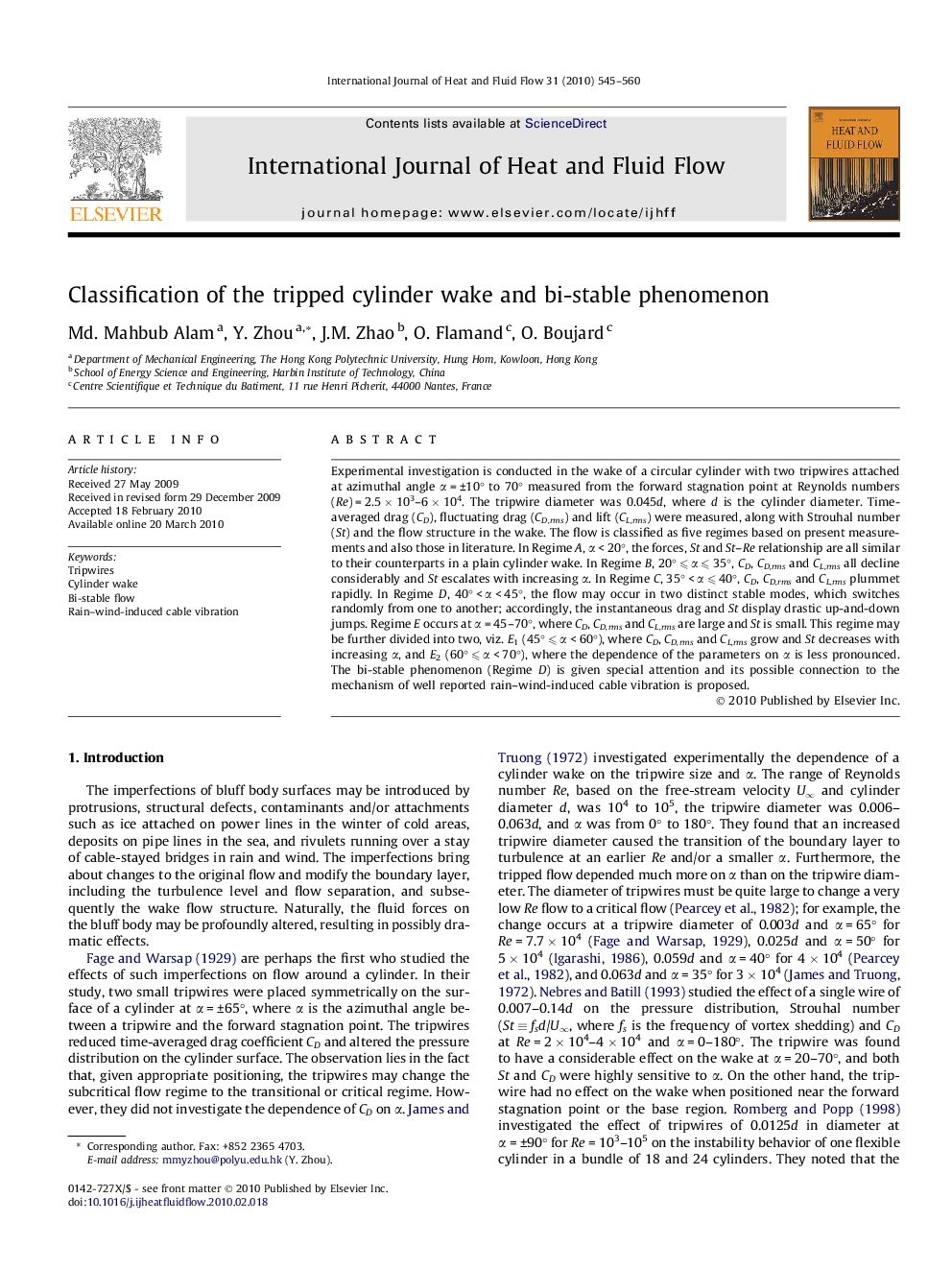| Article ID | Journal | Published Year | Pages | File Type |
|---|---|---|---|---|
| 655308 | International Journal of Heat and Fluid Flow | 2010 | 16 Pages |
Experimental investigation is conducted in the wake of a circular cylinder with two tripwires attached at azimuthal angle α = ±10° to 70° measured from the forward stagnation point at Reynolds numbers (Re) = 2.5 × 103–6 × 104. The tripwire diameter was 0.045d, where d is the cylinder diameter. Time-averaged drag (CD), fluctuating drag (CD,rms) and lift (CL,rms) were measured, along with Strouhal number (St) and the flow structure in the wake. The flow is classified as five regimes based on present measurements and also those in literature. In Regime A, α < 20°, the forces, St and St–Re relationship are all similar to their counterparts in a plain cylinder wake. In Regime B, 20° ⩽ α ⩽ 35°, CD, CD,rms and CL,rms all decline considerably and St escalates with increasing α. In Regime C, 35° < α ⩽ 40°, CD, CD,rms and CL,rms plummet rapidly. In Regime D, 40° < α < 45°, the flow may occur in two distinct stable modes, which switches randomly from one to another; accordingly, the instantaneous drag and St display drastic up-and-down jumps. Regime E occurs at α = 45–70°, where CD, CD,rms and CL,rms are large and St is small. This regime may be further divided into two, viz. E1 (45° ⩽ α < 60°), where CD, CD,rms and CL,rms grow and St decreases with increasing α, and E2 (60° ⩽ α < 70°), where the dependence of the parameters on α is less pronounced. The bi-stable phenomenon (Regime D) is given special attention and its possible connection to the mechanism of well reported rain–wind-induced cable vibration is proposed.
